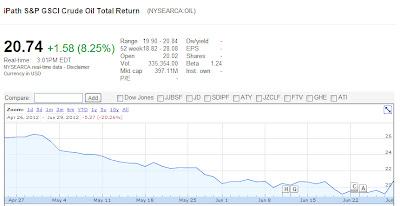Iran Oil Embargo: Russia and The Baltic Dry Index Benefit

Albert's Animation I really love macroeconomics, especially when it's about political themes. This Sunday 1 July 2012 Europe is starting a full oil embargo against Iran. It will not import oil from Iran. Iran will lose 30% of its exports, while Europe loses 6% of its oil imports. This means tight supply of oil and a rising oil price (8%) as a consequence. Chart 1: Crude Oil Price Oil imports into Europe can be found here: http://ec.europa.eu/energy/observatory/oil/import_export_en.htm Table1: Oil Imports to Europe You can see that the biggest oil exporter to Europe, namely Russia (30%) will be the ultimate winner here. Iran will definitely close the strait of Hormuz now. 20% of worldwide oil trade would be disrupted, the baltic dry index would spike and energy costs will rise.












